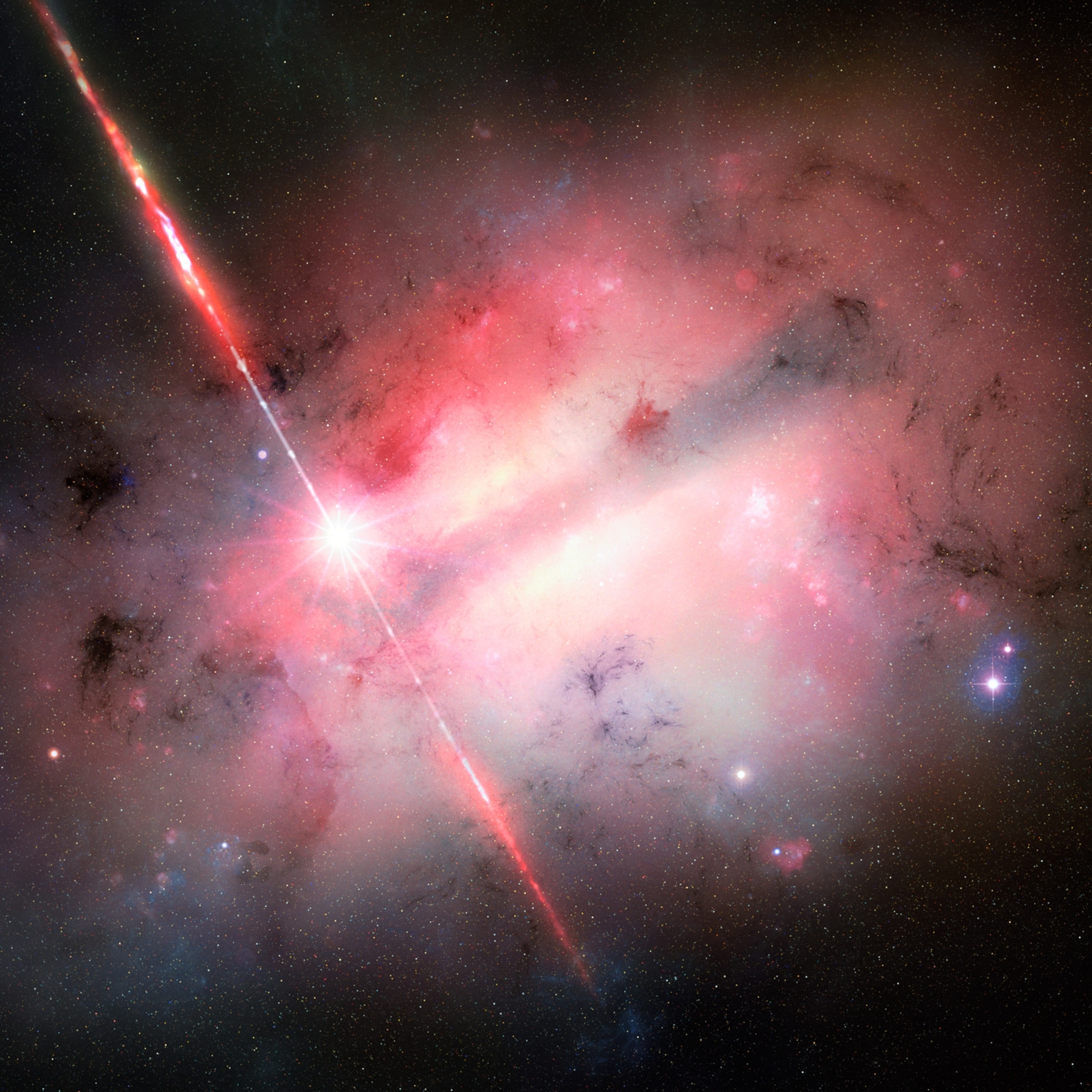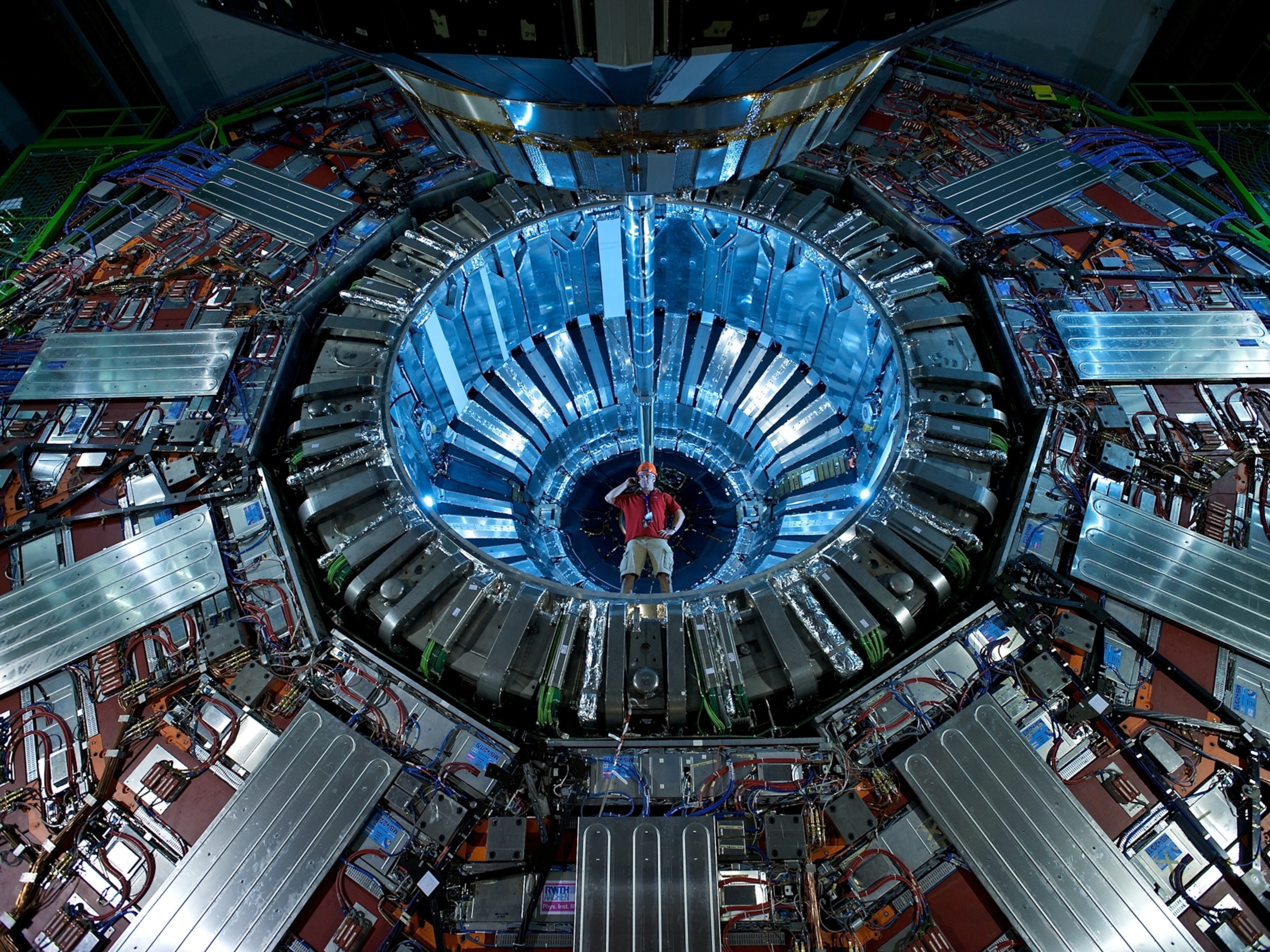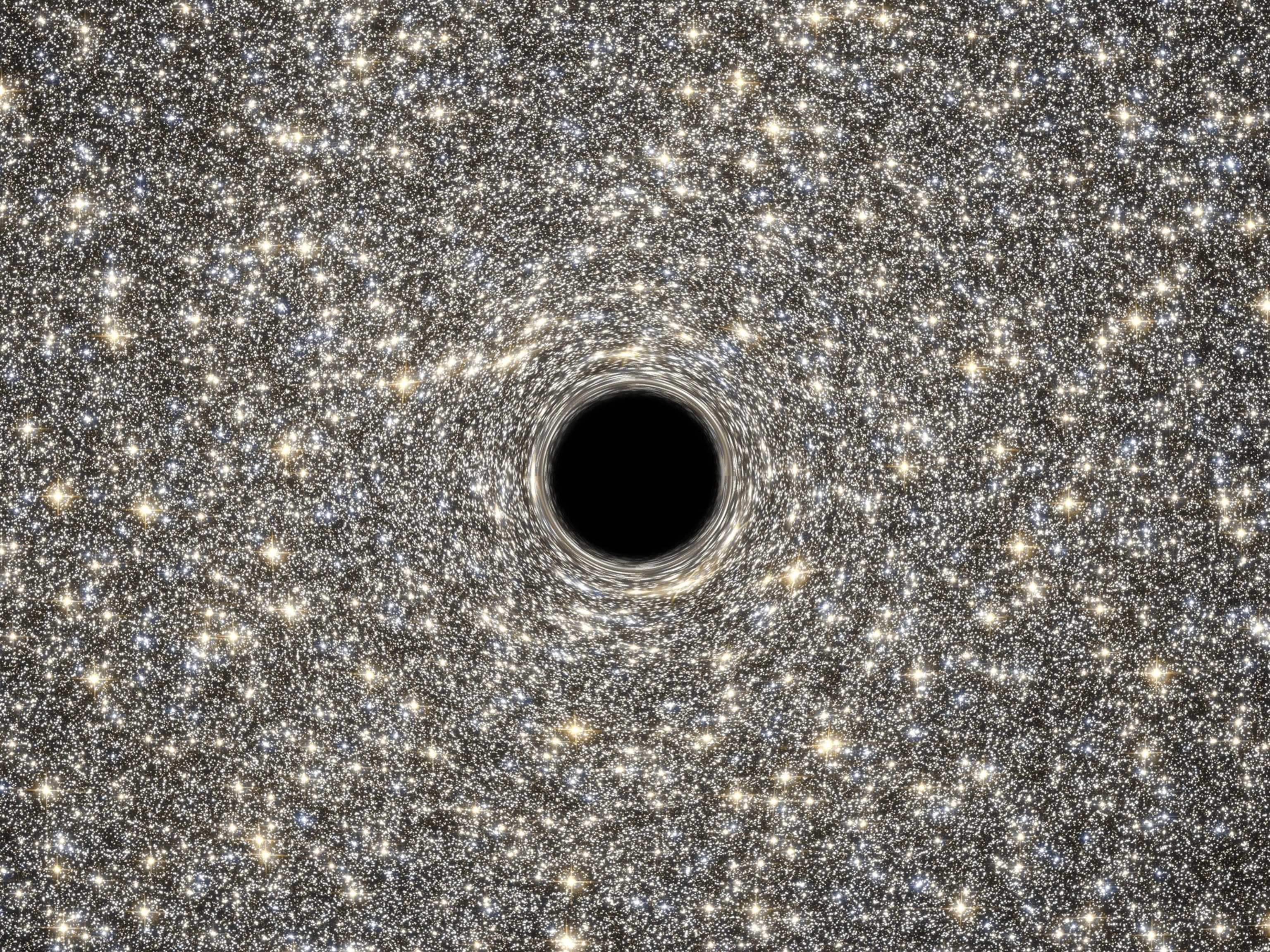What Are Gravitational Waves, and Why Do They Matter?
Find out all about these elusive ripples in space-time and why the latest detection has astronomers celebrating.
On October 16, scientists announced the first observation of its kind: the detection of gravitational waves, wrinkles in spacetime predicted by Einstein more than a century ago, thrown off by two colliding neutron stars.
The stellar crash, which took place 130 million years ago in the constellation Hydra, marks the first time that astronomers have matched gravitational waves with a visible source—showcasing this new era in astronomy.
The discovery is the latest success for one of the most ambitious (and expensive) physics experiments in decades: The Laser Interferometer Gravitational-Wave Observatory, or LIGO for short.
“This is the first time that the cosmos has provided us what I would call a ‘talking movie,’” David Reitze, the executive director of the LIGO Laboratory, said today during an event at the National Press Club in Washington, D.C. “In this case, the ‘audio’ of the soundtrack comes from the [gravitational wave] chirp of the neutron stars as they are inspiraling and colliding; the video is the light that we saw.”
It’s been a big few weeks for gravitational waves. Astronomers only recently unveiled the fourth confirmed detection, spawned by a set of colliding black holes. And on October 3, LIGO founders Rai Weiss, Kip Thorne, and Barry Barish won the 2017 Nobel Prize in physics for their work to detect gravitational waves.
“For as long as 40 years, people have been thinking about this, trying to make a detection, sometimes failing in the early days, and then slowly but surely getting the technology together to be able to do it,” Weiss said. “It’s very, very exciting that it worked out in the end that we are actually detecting things and actually adding to the knowledge, through gravitational waves, of what goes on in the universe.”
But what exactly are these elusive waves, and why are astronomers so excited about this latest detection?
What are gravitational waves?
Put simply, gravitational waves are ripples in the otherwise tough, stiff fabric of spacetime produced by the most violent phenomena the cosmos can offer—things like exploding stars and collisions between ultradense neutron stars or merging black holes. Gravitational waves are washing over Earth all the time, but our instruments have not been sensitive enough to detect them until very recently.
Who first came up with the idea of gravitational waves?
In 1916, Albert Einstein suggested that gravitational waves could be a natural outcome of his general theory of relativity, which says that very massive objects distort the fabric of time and space—an effect we perceive as gravity. Accordingly, very massive objects spiraling toward each other should wrinkle space-time and send those distortions across the cosmos, like ripples spreading across a pond at the speed of light.
In essence, gravitational waves “are propagating disturbances of the shape of spacetime,” says Shane Larson, an astrophysicist at Northwestern University and member of the LIGO scientific collaboration.
Though many other scientists accepted Einstein’s prediction, Einstein himself wasn’t totally convinced that he was right; over the next several decades, he continually waffled over the question of gravitational waves and occasionally published papers refuting his original idea.
Why are these waves so hard to detect?
By the time gravitational waves reach us from the distant events that spawn them, they distort spacetime by an utterly minuscule amount. The distortion is many times smaller than the width of a proton, one of the particles in an atom’s nucleus. Measuring such minute changes in length is pretty much impossible for most instruments.
When did astronomers directly detect gravitational waves?
In the 1970s, scientists observing a pair of pulsars orbiting one another indirectly detected gravitational waves for the first time. Using the giant radio telescope in Arecibo, Puerto Rico, the team had measured the orbits of the two pulsars and determined that the pulsars were moving closer together.
For that to happen, the system must have been radiating energy in the form of gravitational waves—an insight that earned Joe Taylor and Russell Hulse the 1993 Nobel Prize in physics.
But it wasn’t until 2015 that the LIGO team directly detected gravitational waves, using a pair of ultra-sensitive detectors. The discovery ended a century of speculation and confirmed Einstein’s original prediction.
So how does LIGO work?
The LIGO facility consists of two identical L-shaped detectors in Washington state and Louisiana, each of which employs lasers and mirrors to measure the tiny changes in spacetime made by passing gravitational radiation. The name of the game in each location is to record the change in distance between mirrors parked at each end of two perpendicular, 2.5-mile-long arms.
A laser bouncing back and forth between the mirrors keeps track of how far apart they are to an almost impossibly precise degree. Crucially, the detectors are sensitive to things such as passing trucks, lightning strikes, ocean waves, and earthquakes. For a signal to be real, it should show up in both detectors.
Now, the European Gravitational Observatory’s Virgo detector, which is similar to LIGO in design, is live. With three working observatories on the ground, scientists can more precisely identify the region on the sky where a gravitational wave source is located. Soon, similar experiments are anticipated to come online in Japan and India.
Why should we care about these things?
Since LIGO’s first detection, we’ve gained unexpected insight into the cosmos. That’s because gravitational waves are a new way of “seeing” what happens in space: We can now detect events that would otherwise leave little to no observable light, like black hole collisions. And with this latest detection, astronomers were able to combine gravitational waves with more traditional ways of seeing the universe, helping to untangle mysteries about the dense, dead objects known as neutron stars.
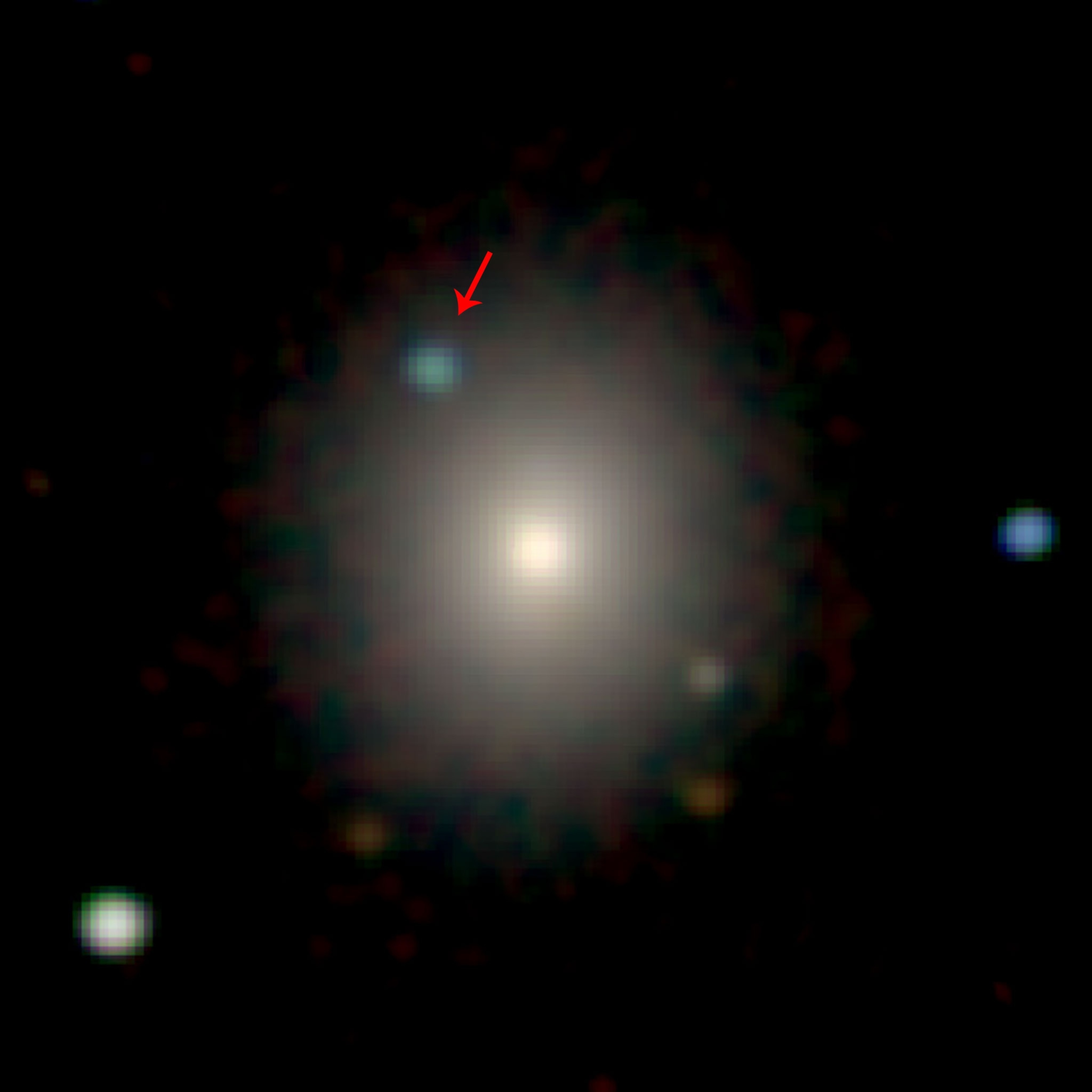
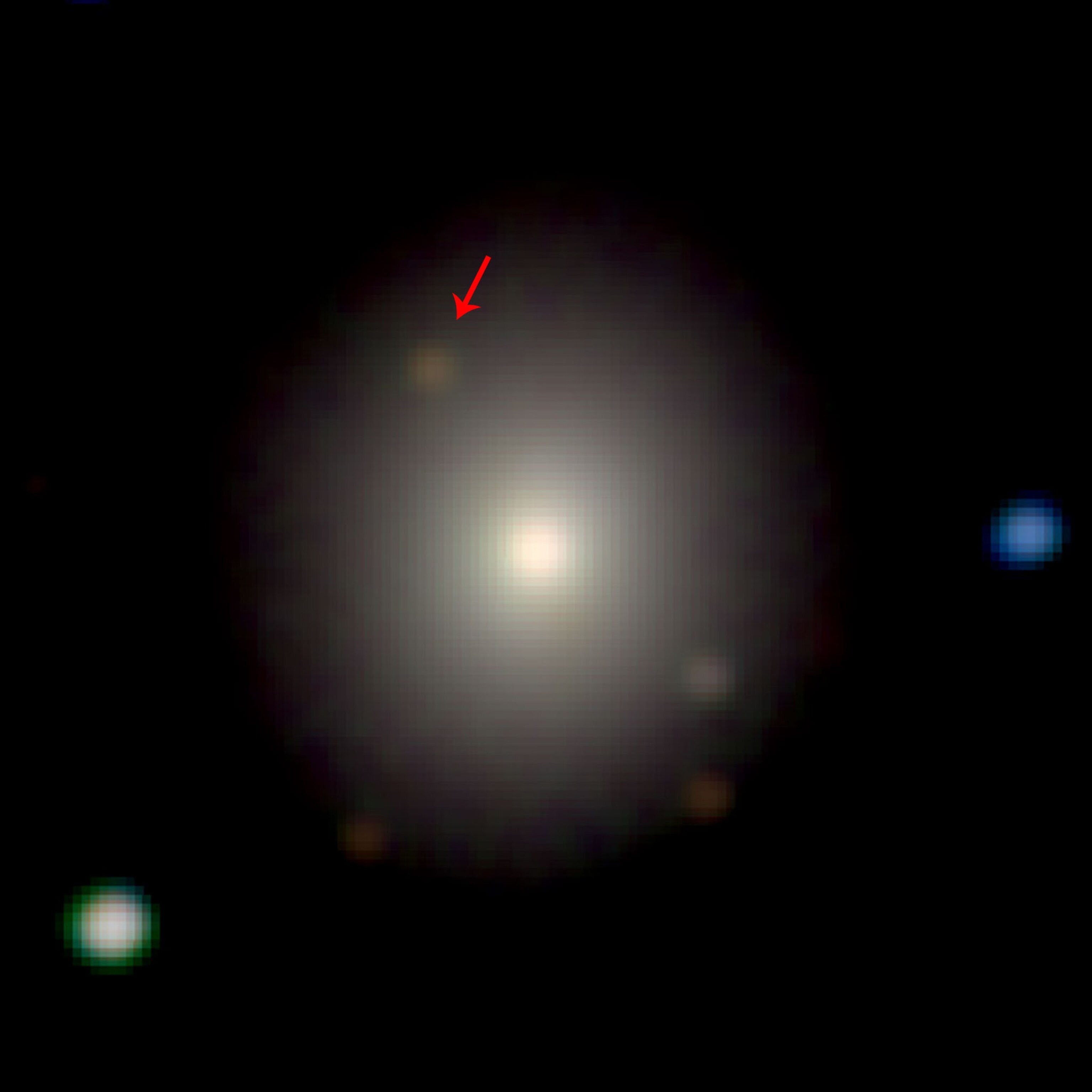
“Most of us fully expect that we’re going to learn things we didn’t know about,” Weiss says. “We knew about black holes in other ways, and we knew about neutron stars … but we hope there are all sorts of other phenomena that you can see mostly because of the gravitational waves they emit. That will open a new science.”
Wait. What exactly is a neutron star?
As their name implies, neutron stars are made almost entirely of neutrons, or uncharged subatomic particles. They form when a star much bigger and brighter than the sun exhausts its thermonuclear fuel supply and explodes into a violent supernova.
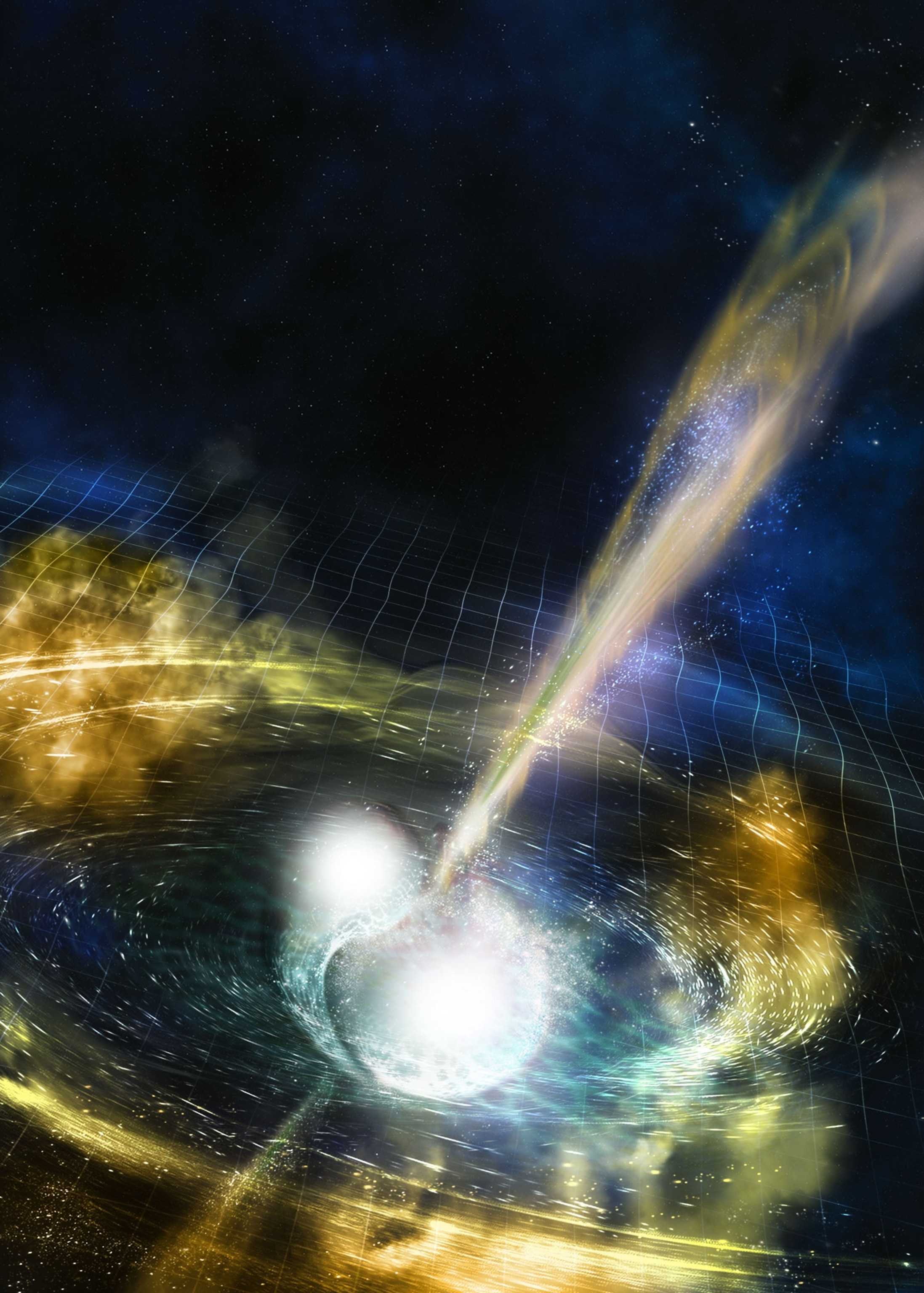
Though the outer layers of the star get blasted into the space, its core collapses inward and forms a sphere about the size of the San Francisco Bay Area but with at least the mass of our sun. These stars, which spin rapidly, are the most compact objects outside of black holes—a sugar cube of the stuff would weigh a billion tons.
And it gets even more exotic. Neutron stars are dead in the sense that they’re no longer fusing elements in their cores, so they don’t shine like the sun.
But that doesn’t mean they’re placid. A neutron star’s magnetic field can be more than a quadrillion times stronger than Earth’s, and its gravitational field can be about a hundred billion times stronger. In other words, you do not want to get anywhere near one of these things if you appreciate being in one piece.
What did we just learn about these weird stars?
Thanks to the gravitational waves acting as a kind of cosmic alert, astronomers were able to scrutinize the remains of these neutron stars and—among other things—help solve a long-standing debate about the origins of precious metals, such as gold and silver, as well a other heavy metals.
Previously, we thought the majority of the universe’s gold was crafted by supernovae—the explosive deaths of giant stars. Now, though, scientists have found that the merger of neutron stars ended in an explosion called a kilonova that spewed out a cloud of atomic nuclei and spawned the production of 16,000 Earths’ worth of heavy metals. The find suggests that most of these metals are actually forged by neutron star smash-ups.
“The gold in this watch is very likely produced by neutron stars that collided billions of years ago,” Reitze announced as he displayed his great-grandfather’s gold pocket watch.



